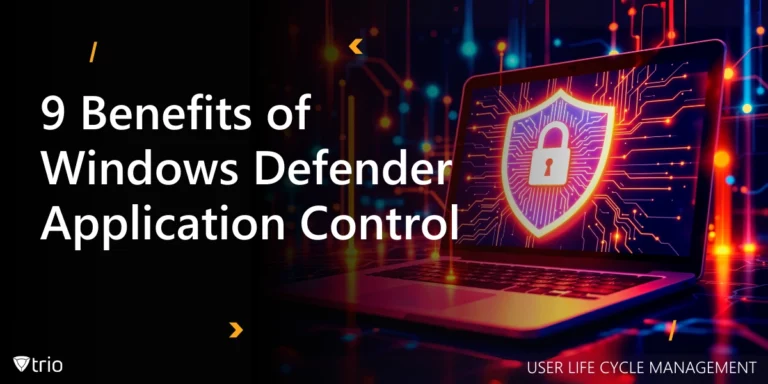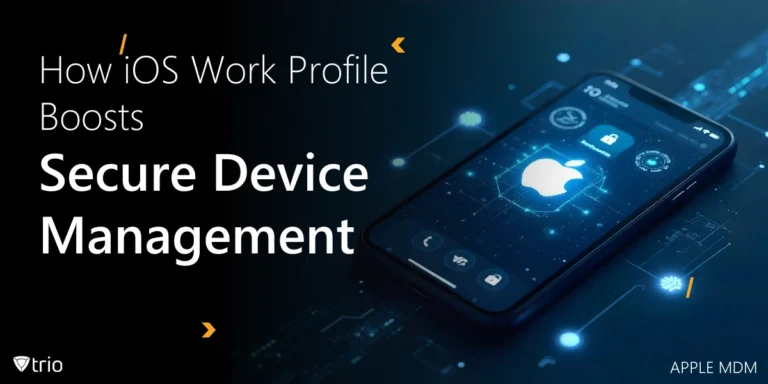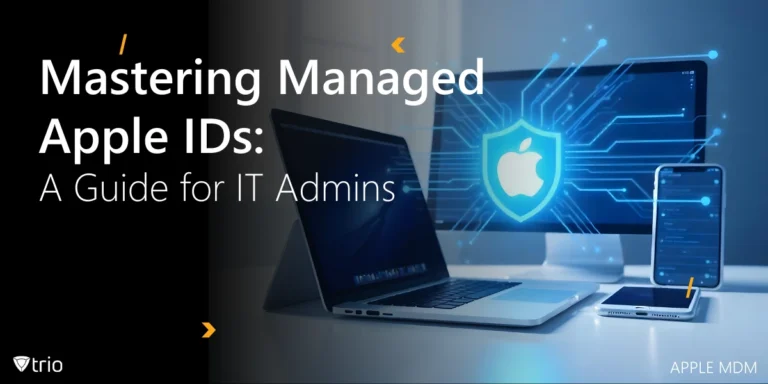Mobile devices have become an essential component of our personal and professional lives in today’s digital world. These gadgets are everywhere, from smartphones and tablets to laptops and wearables, and they serve as our portal to the digital world. The requirement for appropriate device management grows in tandem with the number of devices in use. MDM apps have been developed as an important tool for enterprises and people to retain control and security over their devices. Remote control capabilities, which allow administrators to access and manage devices from a distance, are one of the prominent features of MDM programs. Additionally, the ability to Remote Wipe mobile devices in case of loss or theft adds an extra layer of security, ensuring that sensitive data remains protected.
The Power of Remote Control in MDM Apps
Within the context of Mobile Device Management apps, remote control is a powerful feature that allows administrators or users to remotely access and operate a mobile device. This feature performs numerous critical functions:
- Troubleshooting and Technical Support: IT workers may use remote control to troubleshoot and repair technical issues on mobile devices without being physically present. This has the potential to be game-changing for firms with dispersed workforces or a high number of devices to manage. Technicians can efficiently detect and repair problems, reducing downtime and interruptions.
- Training and Onboarding: The remote control capability may be utilized for onboarding new employees in firms, particularly those that have a bring-your-own-device (BYOD) policy. Trainers may walk new employees through device setup and software installations, enabling a smooth transition into the organization’s digital environment.
- Security and Data Protection: If a device is misplaced or stolen, the remote control may be used to lock, erase, or find the device. This skill is critical for safeguarding sensitive data and adhering to data protection requirements. It gives both corporations and individual users peace of mind.
- Application Management: Remote control may be used to manage and set up mobile device apps. Administrators can, for example, remotely install or remove apps, update software, or check compliance with app usage regulations.
- Real-time Monitoring: Device managers may monitor device health by obtaining real-time data on battery life, network connectivity, and device performance. This allows for proactive maintenance and optimal device health. According to Webinarcare, “Using portable devices for work tasks saves employees 58 minutes per day while increasing productivity by 34%.”
Use Cases for Remote Control in MDM Apps
The applications of remote control apps are diverse and can be tailored to specific needs. Here are some common use cases:
- Enterprise Device Management: Large corporations and organizations can efficiently manage and secure the devices used by their employees, maintaining a standardized and secure digital environment.
- Education: Educational institutions can use remote control to manage and support devices used by students and teachers. It aids in software updates, troubleshooting, and ensuring students’ digital safety.
- Healthcare: Remote control in MDM apps is vital for healthcare facilities where mobile devices are used for patient care and record-keeping. It assists in ensuring compliance with security and privacy regulations.
- Retail: Retailers can remotely configure and manage point-of-sale (POS) devices and ensure they are always running smoothly, reducing potential disruptions in operations.
- Personal Device Management: Individuals can use MDM apps with remote control capabilities and access provisioning to safeguard their devices, locate lost devices, or assist family members with device-related issues.

Security and Privacy Consideration
While the remote control option in MDM programs has many advantages, it also presents security and privacy problems. When utilizing this functionality, organizations and users must employ strong security measures and adhere to best practices. Access restrictions, encryption, and user permission are all critical considerations for a secure remote control feature.
When transitioning to a new MDM solution, such as Trio, it’s essential to ensure a seamless migration process that maintains the integrity of data and settings. Proper planning and execution of MDM migration can help organizations avoid potential security vulnerabilities and data loss during the transition.
That’s why we suggest you use a safe MDM solution that we offer called Trio. Trio has many of the features you would expect from an MDM application including remote control. Trio has two smart remote control features. The first is used for full access and control over devices for remote maintenance purposes. The second is used for sending commands to a device’s terminal.
By incorporating MDM migration into the paragraph, it highlights the importance of a smooth transition between MDM solutions while maintaining security and privacy considerations.
See Trio in Action: Get Your Free Trial Now!
Conclusion
Remote control is a critical feature of Mobile Device Management (MDM) programs like Trio, which enable enterprises and individuals to manage and protect their mobile devices more effectively. The options are endless, from debugging technological difficulties to assuring data privacy and compliance. As mobile devices continue to play an increasingly important part in our lives, the remote control function in MDM apps will become increasingly important, giving a way to traverse the intricacies of the digital world with ease and confidence. You can check out a smart remote control feature on Trio. Try out Trio for free today!




